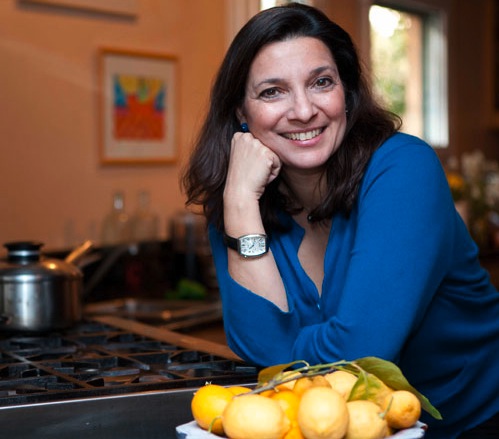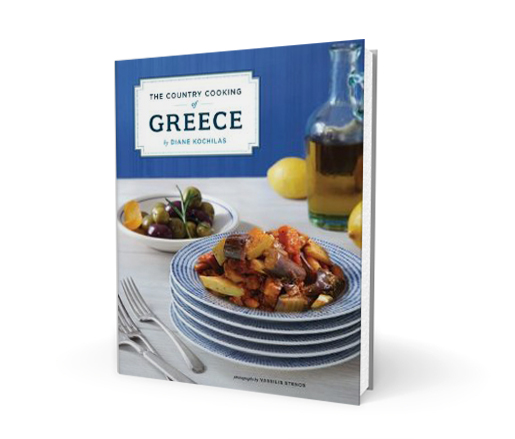
In her new cookbook, The Country Cooking of Greece, Diane Kochilas offers vibrant recipes inspired by rustic tavernas, her own cooking school, and local artisans. We got in touch with the author to learn about her top picks for authentic Greek food in New York City, the distinct regional cuisines within the Mediterranean mecca, and an underlying philosophy of Greek cooking that everyone should master.
(Join Diane tomorrow at noon for a special installment of our Beard on Books series at the Beard House.)
JBF: What is your favorite aspect of Greek cuisine?
Diane Kochilas: There’s a tremendous variety of main-course vegetables and beans that sets Greek cuisine apart from other Mediterranean culinary traditions. Many of these dishes evolved from the fasting calendar: for almost half of the year one abstains from all animal products. But there is nothing "monastic" or didactically virtuous about eating vegetables in Greece—the dishes marry good health with indulgence, which is a rarity!
JBF: What’s your earliest childhood memory of Greek food?
DK: Honey from the wild bees on the island of Ikaria. My family is from there, and it’s where I spent every summer of my childhood and adolescence. Ikaria's honey is as thick as peanut butter, spicy, and unbelievable delicious, with flavors of heather, pine, wildflowers, and thyme. I also remember the tomatoes from my aunt's garden: small, bright, thick-skinned, and intensely flavored.
JBF: How does cuisine differ from region to region in Greece?
DK: Roughly delineated, there is a mainland/mountain cuisine, and then the island traditions. The mainland is colder and has more open plains, which are home to more cattle, shepherding, and grain cultivation. Foods there include the vast array of savory pies (think spanakopita on steroids!) made with cornmeal crusts or wheat pastry, and filled with wild greens, mushrooms, meats, cheeses, eggs, grains, and even lentils. In the north, the spice palate leans more towards heat. Parts of Macedonia were renowned for the cultivation of peppers and for paprika production. Hot peppers sizzle on grills and are served as a meze in restaurants of Thessaloniki, Macedonia’s capital. Many people settled here from Asia Minor after the last throes of the Ottoman Empire in 1922, and they brought an urban and urbane cuisine perfumed with all the spices of Constantinople, which is now Istanbul.
By contrast, island cooking is simple. Fish, of course, plays a prominent role, but so do garden vegetables, wild foraged foods, snails, and other staples.

JBF: Along with your husband, you run a cooking school in the Greek Islands. Are there any fundamental techniques or aspects of Greek cooking philosophy that you think every home cook should master?
DK: Greek cooking is not technique-laden. However, mastering vegetables in all their seasonal glory as protagonists rather than extras is a lesson that many Americans are striving to learn these days. I work with several American universities in an effort to get more main-course Greek vegetable dishes into the student dining halls.
JBF: We know you divide your time between New York City and Greece. When you’re in New York City, are there any favorite spots you turn to for authentic Greek food?
DK: Two! Pylos and Boukiés, both located in downtown Manhattan. I am the consulting chef at both!
JBF: What are some of your other favorite types of cuisines, and why?
DK: I love heat! I love the breadth of Indian cuisine and the vibrancy of Thai cooking. I love Japanese cuisine. And, of course, I love the regional sparks in American cuisine, too.






